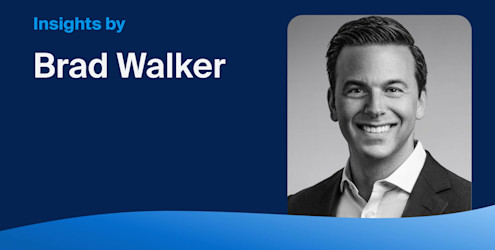For the past decade, we’ve experienced an environment that many consider to be of low inflation and easy monetary policy, while the domestic stock markets recorded the longest bull market in history.1
Then came 2020 and the pandemic induced sell-off in global risk assets and the subsequent fiscal and monetary policy response to shore up economies and stock markets across the world. This stimulus has fed through not only to asset prices, but to the prices of the goods and services we consume. So strong has the impact of the additional liquidity been that we are now experiencing inflation at levels not witnessed in over 40 years.2
It's been quite a ride for investors who may have benefited from the rebound in the stock market, but so strong have been the gains, that many have questioned whether markets can, and should, continue to move higher. This has manifested itself in the consciousness of investors, 46%3 of whom are feeling “bearish” about the markets.
It is in times like these that some financial advisors turn to the old adage of “stay the course” in an attempt to claim the nerves of jittery clients.
A potential problem is that we may be entering an interest rate tightening cycle, at the same time we have seemingly high inflation and stock market valuations. In such conditions, it is reasonable to expect that the next decade will look entirely different to the one we have just experienced. So, while “stay the course” may still be wise advice, the present situation may provide an opportunity to reassess client portfolios and prepare them for the road ahead.
The Strategies of the Last 40 Years May Not Work for the Next 40 Years
It has been more than 40 years since we saw both inflation and interest rates peak before starting their four-decade march lower. Since September 1981, when the U.S. 10-Year Treasury Bond interest rate peaked at 15.8, Bloomberg shows the Dow Jones Industrial Average has gained over 38 times despite a few (rather major) hiccups. The prior forty years starting in 1941 saw it gain almost 6 times – more than 6 times less than the most recent period. And just last November, the NASDAQ closed above 16,000 for the first time ever.
All that is to say that the past forty years have generally been positive for equity investors. But there may be a change in the air.
Traditional Wisdom
Traditional wisdom becomes traditional wisdom for a reason – it generally works. And “stay the course” has generally been positive for investors over the past few decades. But the next 40 years may have a few new factors that may impact markets – the ongoing global pandemic, inflation, Russian aggression, worsening relations with China – just to name a few.
Tools for the Times
With such a wide range of factors affecting the day-to-day of markets, investors may need to adopt a more active approach to their portfolios to help navigate uncertainty.
Thankfully, investors today have several tools available to them due in part to their flexibility and relevance to the present market environment.
Strategic Asset Allocation
For at least a decade now, the FAANGM stocks (Alphabet, Apple, Meta, Microsoft and Netflix) have become a large driver of broader market performance4 given their weight within market capitalization indices such as the S&P 500 now exceeds 20%. However, despite the dominant growth of these, and other high growth stocks, the recent increases in interest rates have many investors reassessing how much they are willing to pay for these names, all of which are currently trading below their record prices set last year according to Bloomberg data.
The traditional wisdom of “stay the course” may see investors stick with these public equity companies in order to participate in potential future gains. However, given where many believe we are in the business and interest rate cycle, it may be more prudent to for investors to update their strategic asset allocation, and to cast a wider net for investments that are lowly correlated to stocks and driven by diversified sources of returns.
Alternative investment solutions such as private market asset classes like private equity and debt, as well as digital assets like Bitcoin may help realign portfolios.
Tactical Asset Allocation
As markets oscillate and adapt to the changing nature of the broader economy, investors have the opportunity to take advantage of dislocations and divergences to look to hedging instruments, such as hedge funds and structured notes, to seek to trade in and around these different environments. Timing the market is difficult but using these periods could potentially provide entry points into these strategies.
Take the Opportunity To Reassess Your Portfolio
The core of this discussion embraces the notion of diversification, which, as Nobel Prize winner Harry Markowitz is attributed to as having said “is the only free lunch in finance.”
Investors should take this time to reexamine their portfolios and to figure out how much of them are built on traditional wisdom and how much of them are built for the present and future.
Here are a few questions investors should ask themselves in relation to their investments:
How much am I counting on tech to continue doing the same things it’s been doing for the last 20 years?
How can I hedge myself against the record inflation we’re experiencing right now
How much of my portfolio is built on the movements of the last 40 years, and what changes might I want to make to prepare for the next 40?
With the pandemic winding down, how can I position my portfolio to capitalize on a future world that may look very different from the past?
What role do alternative investments and sources of risk and return play within my portfolio?
“Stay the course” may remain sage advice, but sometimes a change is so drastic you should stop, look at the course you’re on and consider adjustments to account for new terrain.
For more information about investment opportunities available on the CAIS Platform, contact a CAIS representative.





